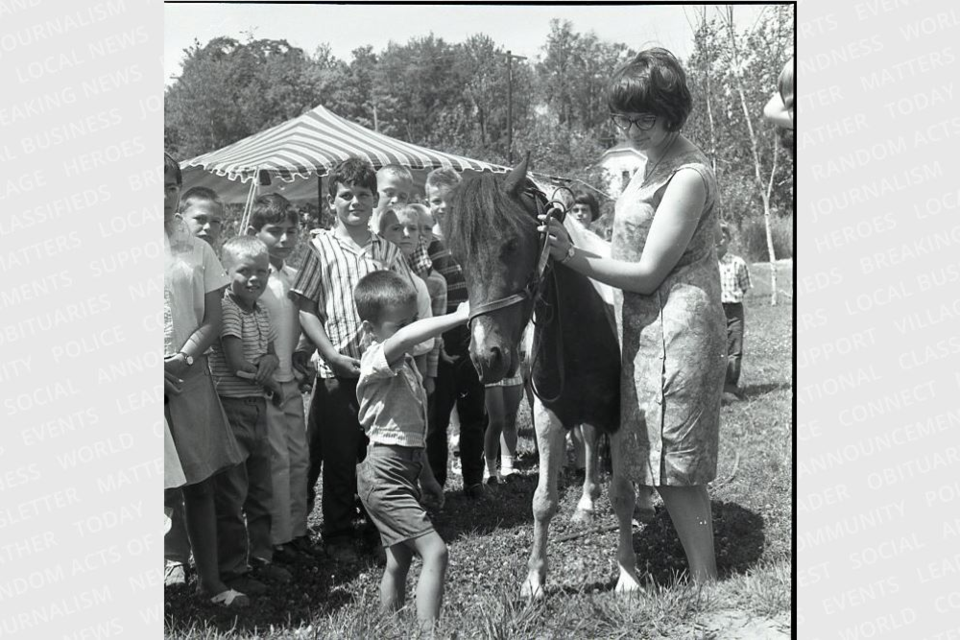From the archives of the Sault Ste. Marie Public Library:
In 1965, members of the Junior Humane Society dove headfirst into an ambitious project: purchasing a horse.
The Junior Humane Society was a long-standing group that served to educate young people in the humane and responsible treatment of animals. This kid-focused contingent appeared to have been first formed in the late 1920s, and it was “flourishing” by 1929 according to the Sault Daily Star. However, like the rest of the Humane Society, it hit some turbulent years during the Great Depression.
In the 1940s, the Humane Society “[staged] a come-back” after over a decade of being non-operational, and with it came calls to revive the Junior Humane Society as well. Officials approached the school board with the goal of making it a club much like the Junior Red Cross. But it wasn’t until 1956, when two horrifying instances of animal cruelty perpetrated by children were reported, that the Humane Society pushed urgently to re-establish the Junior Humane Society so that it might “[instill] in the youngsters a little compassion for all living creatures.” By 1960, the Kindness Club, the renamed children’s group, was up and running.
The club held some activities through the years, including essay contests and kindness cards. However, the project that attracted the most media attention was that of fundraising for and purchasing “a horse to call their own.”
The first stage of the process was a contest where, among other challenges, they asked children to send in their best ideas for how to raise funds for the project. Some of the ideas were pretty standard: “Sell things,” “Ask people to donate and if they do they can be the first to see him (the horse).” Others were more specific and innovative, including, “When you have a party and the kids do not mind their manners charge 5 cents or 10 cents.”
Despite all of their best ideas, three months in, the Humane Society Shelter still had not raised enough money to purchase a horse. However, they did arrange for a demonstration on the care of horses, a question and answer session, and a trip to a riding stable where they could witness and try horse riding for themselves – what the Sault Daily Star described as “the next best thing.”
Over 60 children participated in these sessions, an illustration of the interest in responsible horse ownership. And, all the while, fundraising efforts continued, including bake sales and contests.
Then, in July of 1966, over a year since their fundraising project first started, the Junior Humane Society finally had their own horse. Patches, as the Star reported, was “a four-year-old brown and white true pinto Shetland Pony” from Bruce Mines, who arrived to much fanfare from a welcome party consisting of more than four dozen children.
Patches was primarily purchased, according to Shelter Manager Betty Gaughan, to help children gain an appreciation for horses and learn how to look after them. She hoped to raise additional money to purchase equipment for him.
While the idea of an animal owned by the Humane Society may seem strange to us today, Patches wasn’t the first creature under the permanent care of the organization. The Junior Humane Kindness Club also looked after “two goats, rabbits, pigeons, a pheasant and Charlie, a tame crow.” Patches became a celebrated addition to the society’s menagerie, all in the hopes of educating children about the responsible and caring treatment of animals.
Each week, the Sault Ste. Marie Public Library and its Archives provide SooToday readers with a glimpse of the city’s past.
Find out more of what the Public Library has to offer at www.ssmpl.ca and look for more "Remember This?" columns here.
